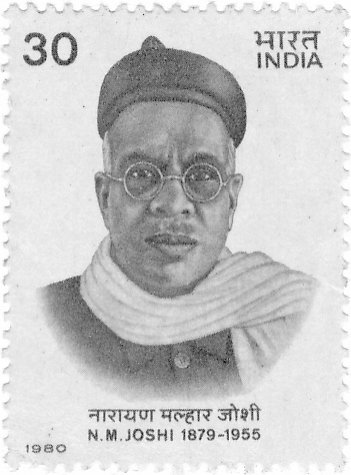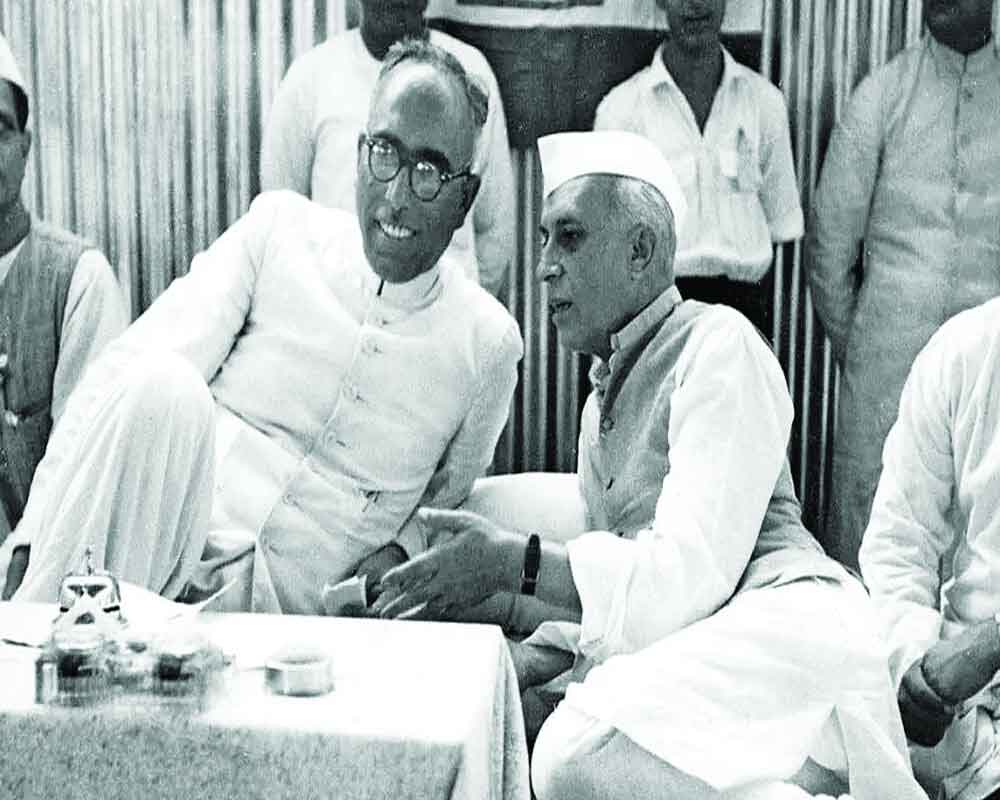#RaniAhilyabaiHolkar
The Queen of Malwa, apart from being a brave queen and proficient ruler, was also an erudite politician. She observed the bigger picture when the Maratha Peshwa couldn’t pin down the agenda of the British.
Ahilya (Born : 31 May 1725), Jamkhed

The Queen of Malwa, apart from being a brave queen and proficient ruler, was also an erudite politician. She observed the bigger picture when the Maratha Peshwa couldn’t pin down the agenda of the British.
Ahilya (Born : 31 May 1725), Jamkhed


did not come from a royal lineage, most deem her entry into history a twist of fate.
Her father, Mankoji Rao Shinde, was the Patil (chief) of the village.
Malhar Rao Holkar, spotted an eight-year-old Ahilyabai at the temple service feeding the hungry and poor, he decided to
Her father, Mankoji Rao Shinde, was the Patil (chief) of the village.
Malhar Rao Holkar, spotted an eight-year-old Ahilyabai at the temple service feeding the hungry and poor, he decided to
ask her hand in marriage for his son Khanderao. She was married to Khanderao Holkar in 1733.
Khanderao was killed in the battle of Kumbher in 1754, leaving her a widow at only 29.
When Ahilyabai was about to commit Sati, her father-in-law Malhar Rao refused to let it happen.
Khanderao was killed in the battle of Kumbher in 1754, leaving her a widow at only 29.
When Ahilyabai was about to commit Sati, her father-in-law Malhar Rao refused to let it happen.
He had been her strongest pillar of support at the time. But a young Ahilyabai could see her kingdom fall like a pack of cards after her father-in-law passed away in 1766, only 12 years after the death of his son Khanderao.
Her only Son, Male Rao too died, a few months
Her only Son, Male Rao too died, a few months
into his rule, on 5 April 1767.
Inspite of loosing all, Ahilyabai stood undeterred. She did not let the grief of her loss affect the administration of the kingdom and the lives of her people.
Ahilyabai ascended the throne and became the ruler of Indore on 11 December 1767.
Inspite of loosing all, Ahilyabai stood undeterred. She did not let the grief of her loss affect the administration of the kingdom and the lives of her people.
Ahilyabai ascended the throne and became the ruler of Indore on 11 December 1767.
She ruled the province of Malwa for 28 years before she died, and created a strong local administration, overcoming the 18th-century disadvantage of gender.
Ahilyabai stands out as a strong ruler spreading the message of dharma, rejuvenating Hinduism, and promoting the
Ahilyabai stands out as a strong ruler spreading the message of dharma, rejuvenating Hinduism, and promoting the
relatively modern systems for small-scale industrialisation.
Ahilyabai set up her capital at the ancient city of Maheshwar on the banks of the Narmada River. The mighty fort that she built stands firm even today, overlooking a broad stretch of the Narmada. Although Holkars
Ahilyabai set up her capital at the ancient city of Maheshwar on the banks of the Narmada River. The mighty fort that she built stands firm even today, overlooking a broad stretch of the Narmada. Although Holkars
were based in Indore, she distinguished between her capital Maheshwar as the seat of power and Indore as the center for all economic activity. Under her rule, Indore prospered into a major trading hub from being a small town.
She brought about two important changes in the
She brought about two important changes in the
administration, both divergences from the traditions of her era.
Firstly, she vested military power in Tukoji Holkar, a confidante of her father-in-law though not related. She took care of the administrative functions herself after assuming the throne.
Secondly, she separated
Firstly, she vested military power in Tukoji Holkar, a confidante of her father-in-law though not related. She took care of the administrative functions herself after assuming the throne.
Secondly, she separated
the state’s revenue from the personal use of the ruling family. Her personal expenses were met from inherited wealth and the land holdings she had. The British regent John Malcolm has documented these administrative improvements in his memoirs Central India published in 1880.
The most significant contribution of Ahilyabai, however, comes in the preservation, reconstruction and refurbishment of a host of Hindu sites which she carried out during her 30-year rule. From Gangotri to Rameshwaram, and from Dwarka to Gaya, she spent money on rebuilding 

Mandirs destroyed under the Mughal rule, in restoring the past glory of holy sites, in building new Devalaya's and in building ghats for easy access to almost all major rivers in the Bharatvarsha.
The list of the Mandir architectural interventions by Ahilyabai is endless.
The list of the Mandir architectural interventions by Ahilyabai is endless.
The most significant one, however, is the current Kashi Vishwanath Mandir in Varanasi. Destroyed by the Mughal ruler Aurangzeb to build the Gyaanvapi mosque, the Devalay was restored in its current form by Ahilyabai in the year 1780, 111 years after its destruction.
Ahilyabai also refurbished the Dashashwamedh Ghat, site of the famous Ganga Aarti, built originally by Nanasaheb Peshwa and the Manikarnika Ghat, the main cremation site in Varanasi.
Among the imposing Devasthana structures, constructed by Ahilyabai, which survive today is the
Among the imposing Devasthana structures, constructed by Ahilyabai, which survive today is the
Vishnupad Mandir in Gaya. Legend has it that this is the site of Shri Vishnu crushing the demon Gayasura, and his footprint is etched in rocks. The Mandir is built on these rocks bearing 40 cm long footprint of Bhagawan Vishnu.
Ahilyabai, despite being a devout Shiva Bhakth
Ahilyabai, despite being a devout Shiva Bhakth
got this Mandir constructed in 1787.
The Ramachandra Devalaya in Puri, Hanuman Mandir in Rameshwaram, Shri Vaidyanatha in Parli Vaijnath and the Sharayu Ghat in Ayodhya all bear her contributions.
It is fair to say that no other individual in the modern era has worked towards
The Ramachandra Devalaya in Puri, Hanuman Mandir in Rameshwaram, Shri Vaidyanatha in Parli Vaijnath and the Sharayu Ghat in Ayodhya all bear her contributions.
It is fair to say that no other individual in the modern era has worked towards
the renovation and overhauling of Hindu holy sites as Ahilyabai.
If, in the current day, Hindus can visit and appreciate the centres so integral to the ancient history and evolution of the dharma, a significant part of the credit goes to her. It is unfortunate that most
If, in the current day, Hindus can visit and appreciate the centres so integral to the ancient history and evolution of the dharma, a significant part of the credit goes to her. It is unfortunate that most
these places do not bear inscriptions in her name, but it was perhaps her operative style too— the architectural restoration work was carried out of an innate sense of religiosity, and was not linked to politics or gaudy display of wealth.
Ahilyabai attained sadgati on
Ahilyabai attained sadgati on
13th August 1975 Indore.
Her legacy is not enshrined in her name despite the works she undertook all over India. But, more worryingly, her legacy is not documented in a structured way in history textbooks or popular references either.
#AhilyabaiHolkarJayanti
#VANDEMATARAM
Her legacy is not enshrined in her name despite the works she undertook all over India. But, more worryingly, her legacy is not documented in a structured way in history textbooks or popular references either.
#AhilyabaiHolkarJayanti
#VANDEMATARAM
Rani Ahilyabai Holkar joined Eshwara on 13th August 1795, not 1975.
Please apologise 🙏
Please apologise 🙏
• • •
Missing some Tweet in this thread? You can try to
force a refresh

 Read on Twitter
Read on Twitter















